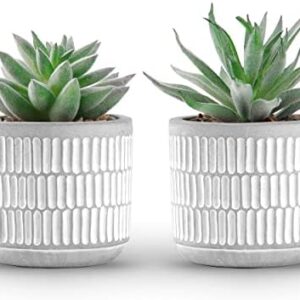Succulents have become increasingly popular in recent years as houseplants, thanks to their unique and low-maintenance nature. These adorable little plants come in a variety of shapes, sizes, and colors, making them a great addition to any home décor. And if you’re a succulent lover like me, you probably can’t get enough of them!
One of the best things about succulents is that they are very easy to propagate, or reproduce, at home. This means that you can grow your succulent garden without having to spend a lot of money buying new plants. All you need is a propagation station, a little patience, and the right techniques to grow your succulent collection.
What is a propagation station, you may ask? Well, it’s essentially a designated area in your home where you can propagate your succulents. This can be a small corner of a room, a windowsill, or even a dedicated shelf or table. The key is to create a space where your succulents can thrive and grow new roots.
To get started with your propagation station, you’ll need a few basic supplies. First, you’ll need some succulent cuttings or leaves. You can take cuttings from your existing plants or ask friends and family for some of theirs. It’s also possible to purchase succulent cuttings online or at a local plant nursery.
Next, you’ll need a suitable container to plant your succulent cuttings in. This can be a small pot, a glass jar, or even a plastic tray. Just make sure that the container has good drainage holes to prevent water from pooling and causing root rot.
You’ll also need some well-draining soil for your succulents. You can use a pre-made succulent soil mix or create your own by mixing potting soil with perlite or sand. This will help prevent your succulents from sitting in waterlogged soil, which can lead to root rot.
Now that you have your supplies ready, it’s time to start propagating your succulents. There are two main methods of propagation that you can use: leaf propagation and stem cuttings.
For leaf propagation, simply take a healthy leaf from your succulent plant and let it sit out for a few days to callous over. Once the leaf has calloused, place it on top of the soil in your container and lightly mist it with water every few days. You should start to see roots and a new plantlet forming in a few weeks.
Stem cuttings are another method of propagation that is commonly used for succulents. Simply cut a healthy stem from your plant, let it dry out for a few days, and then plant it in soil. Keep the soil lightly moist and place the container in a warm, sunny spot. In a few weeks, you should see roots forming and a new plant beginning to grow.
As your succulents start to grow in your propagation station, it’s important to care for them properly. Make sure to water your plants sparingly, as succulents are drought-tolerant and can rot if overwatered. Also, provide them with plenty of sunlight, as most succulents prefer bright, indirect light.
Once your succulents have established roots and are growing well, you can start thinking about transplanting them into their own pots. Be gentle when removing them from the propagation station and be sure to transplant them into well-draining soil to prevent root rot.
Before you know it, you’ll have a beautiful collection of succulents that you’ve grown yourself through propagation. Not only is it a rewarding experience, but it’s also a great way to save money and expand your succulent collection.
So, if you’re a succulent lover looking to grow your garden through reproduction, consider setting up your own propagation station. With a little time, patience, and care, you’ll soon have a thriving succulent garden that you can be proud of. Happy propagating!






